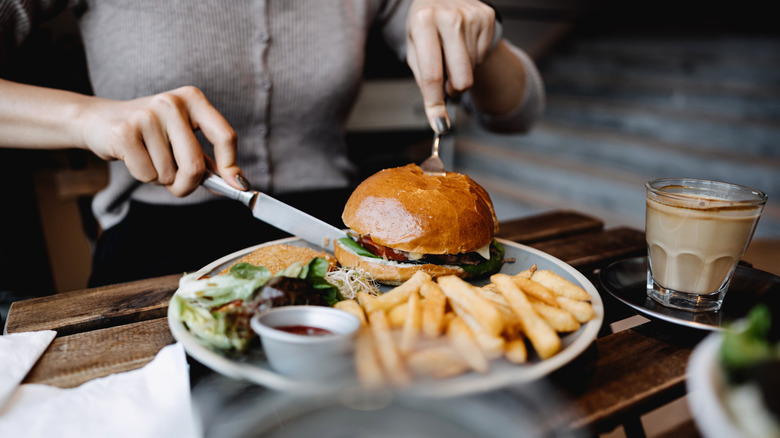In the world of culinary arts, the debate of American vs Continental knife style is one that piques the interest of many kitchen professionals. Both styles bring their unique flair to the table, influencing not only the aesthetics of dining but also the efficiency and precision with which meals are prepared and consumed.

Understanding the Basics of Knife Styles
Before diving deep into the specifics of American and Continental knife styles, it's essential to grasp the fundamental differences between them. The American style, often referred to as the 'zigzag' method, involves switching the fork to the right hand after cutting food, while the knife is placed down. On the other hand, the Continental style maintains the fork in the left hand and the knife in the right, allowing for a more fluid and continuous dining experience.
The Evolution and Influence of Knife Styles
The origin of these styles can be traced back to cultural differences and historical developments in dining etiquette. The language of cutlery has evolved over centuries, influenced by societal norms and the globalization of culinary practices. Understanding these origins provides a richer context for why these styles continue to be relevant today.
Practical Applications in the Kitchen
For kitchen professionals, the decision between adopting an American or Continental knife style can affect not just the dining experience but also the workflow in meal preparation. Chefs who prefer the American style might find it advantageous in scenarios where speed and efficiency are prioritized, whereas the Continental style might offer more control and precision, essential in delicate culinary tasks.
Consider exploring the nuances of holding cutlery at a formal dinner, which can further enhance your understanding of these knife styles in practice.
Choosing the Right Style for Your Needs
One of the critical aspects of determining the best knife style for your kitchen is understanding your unique needs and preferences. Are you focused on speed and efficiency, or do you prioritize precision and control? The American knife style might suit a fast-paced kitchen environment, while the Continental style could be more aligned with a focus on meticulous presentation and technique.
Common Misconceptions About Knife Styles
A common misconception is that one style is inherently superior to the other. However, both styles have their strengths and weaknesses, and the key lies in understanding the context in which they are applied. It's crucial to dispel myths and approach this choice with an open and informed perspective.
For further insights, you might find the etiquette guide on using fork and knife helpful in refining your understanding of these styles.
Integrating Knife Styles into Culinary Education
Incorporating both American and Continental knife styles into culinary education can enrich the learning experience for aspiring chefs. By understanding the benefits and limitations of each style, culinary students can develop the versatility needed to adapt to various dining settings and cultural contexts.
Consider the implications of knife etiquette when working with specific dishes, such as kataifi, to provide a practical application of these styles in everyday cooking.
Conclusion: Finding Your Preferred Knife Style
Ultimately, the choice between American vs Continental knife style is a personal one, influenced by a variety of factors including cultural background, culinary training, and individual preference. By understanding the characteristics and applications of each style, kitchen professionals can make informed decisions that enhance their culinary practice.
For additional reading on this topic, the Wikipedia article on eating utensil etiquette offers a comprehensive overview of the cultural nuances related to knife styles.

FAQs
What is the main difference between American and Continental knife styles?
The primary difference lies in how the knife and fork are used. The American style involves switching the fork to the right hand after cutting food, whereas the Continental style keeps the fork in the left hand and the knife in the right for continuous cutting and eating.
Which knife style is better for professional chefs?
Both styles have their advantages. Professional chefs may choose based on their personal preference, the type of cuisine they specialize in, or the specific requirements of their kitchen environment. The American style is often associated with speed, while the Continental style is linked to precision.
How can I practice and improve my knife style?
Practicing with different types of cuisine and settings can help improve your proficiency in both styles. Additionally, observing experienced chefs and experimenting with dishes like shepherd's pie can provide practical insights into refining your technique.
This article contains affiliate links. We may earn a commission at no extra cost to you.


























